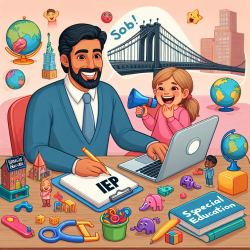Introduction
In the ever-evolving field of child psychology and mental health, understanding the intricate dimensions of psychopathology is crucial for practitioners aiming to improve therapeutic outcomes. The research article "Bifactor models of psychopathology using multi-informant and multi-instrument dimensional measures in the ABCD study" by Jacobs et al. (2024) offers a comprehensive exploration of these dimensions using advanced bifactor models. This blog aims to translate these findings into actionable insights for practitioners, particularly those involved in speech-language pathology and related fields.
The Study's Core Findings
The study utilized data from the Adolescent Brain Cognitive Development (ABCD) Study, encompassing 11,185 children aged 9–10. By employing bifactor exploratory structural equation modeling (B-ESEM), the researchers integrated diverse child-report and parent-report instruments to examine a wide range of psychopathology measures. The study identified several key factors:
- General Psychopathology Factor: Psychotic-like experiences (PLEs) loaded most highly onto this factor, indicating a non-specific risk for mental illness.
- Specific Factors: Autism Spectrum Disorder (ASD) symptoms, impulsivity, and sensitivity to reward and punishment were found to load onto distinct factors, separate from traditional externalizing and internalizing factors.
These findings suggest that a nuanced understanding of psychopathology can enhance the accuracy and effectiveness of mental health assessments in children.
Implications for Practitioners
For practitioners, particularly those in speech-language pathology, these findings underscore the importance of adopting a multidimensional approach to mental health assessments. Here are some practical implications:
- Holistic Assessment: Consider integrating multiple informant reports (e.g., child, parent) to capture a comprehensive view of a child's mental health.
- Focus on Specific Factors: Pay attention to distinct symptoms such as impulsivity and ASD traits, which may require tailored interventions.
- Data-Driven Decisions: Utilize quantitative models like B-ESEM to inform clinical decisions, ensuring that interventions are grounded in robust empirical evidence.
Encouraging Further Research
While the study provides valuable insights, it also highlights the need for ongoing research to refine our understanding of psychopathology in children. Practitioners are encouraged to engage with the latest research and consider participating in studies that explore the intersections of speech-language pathology and mental health.
Conclusion
The bifactor models of psychopathology presented in this study offer a promising framework for enhancing child mental health assessments. By embracing a data-driven approach and focusing on specific symptom dimensions, practitioners can improve therapeutic outcomes and support the holistic development of children.
To read the original research paper, please follow this link: Bifactor models of psychopathology using multi-informant and multi-instrument dimensional measures in the ABCD study.










